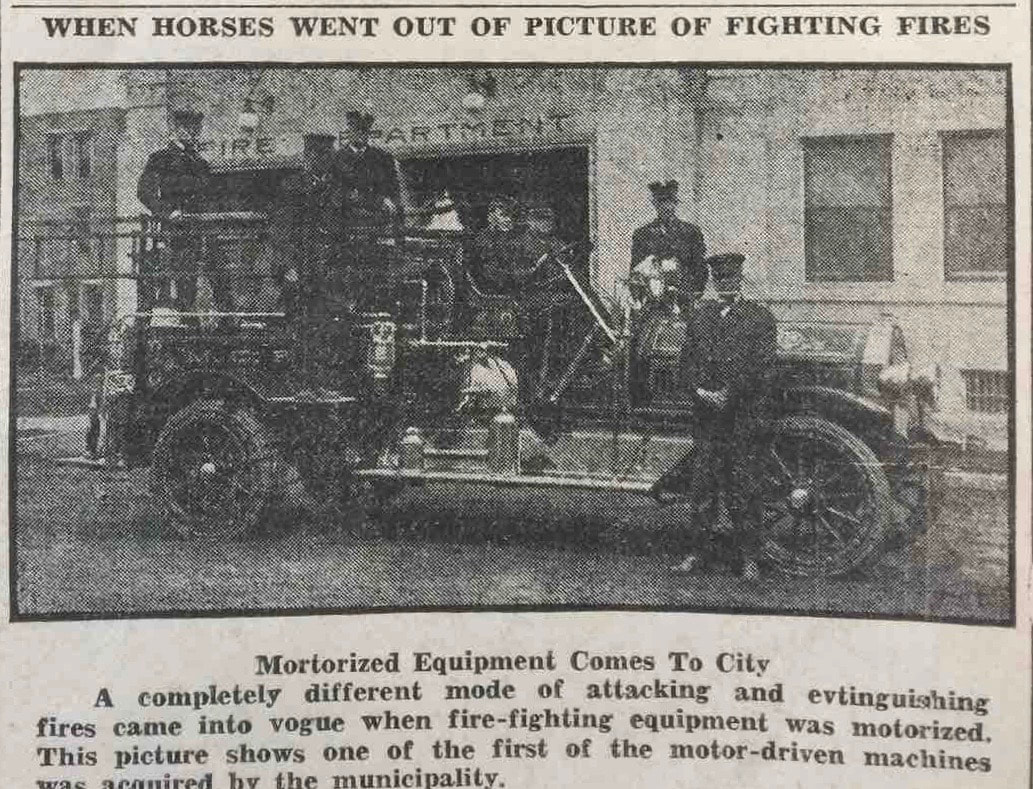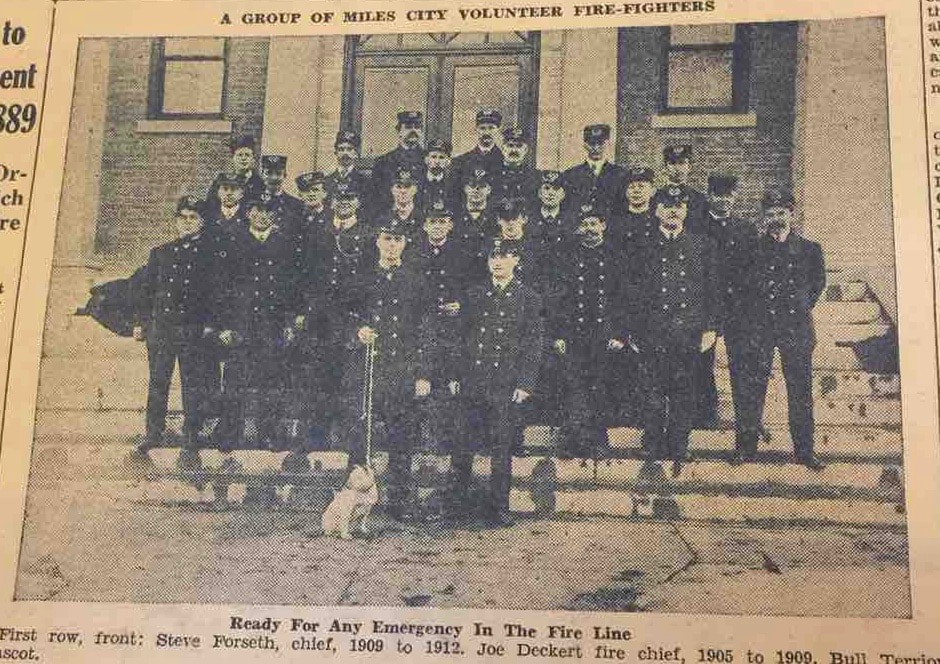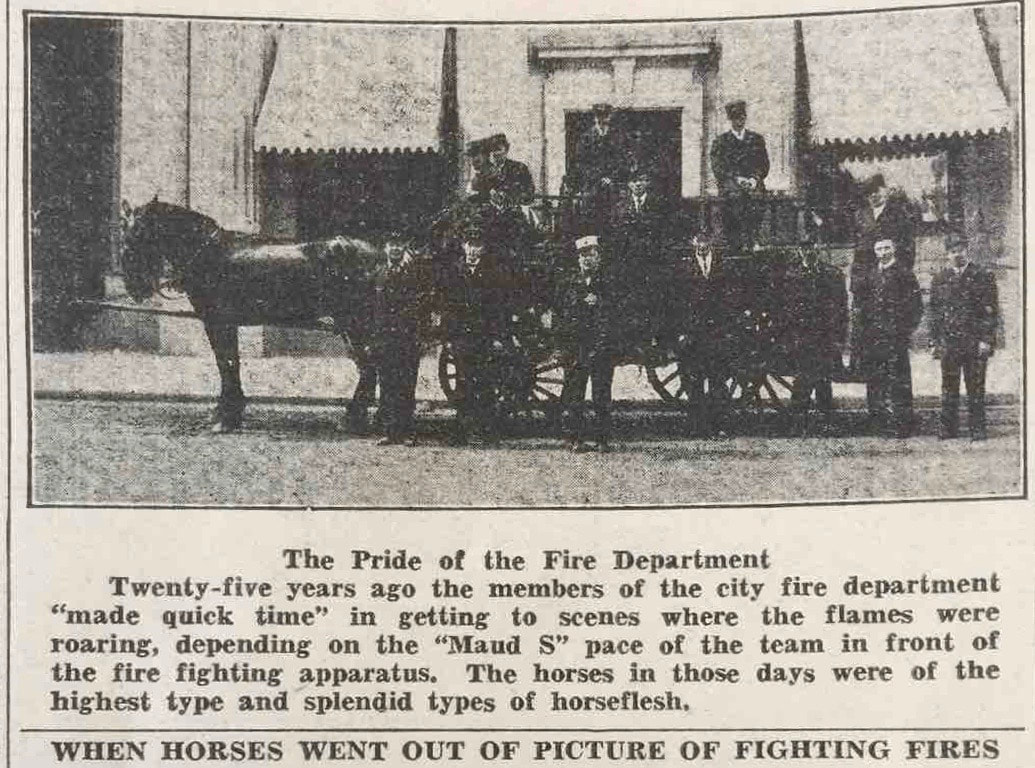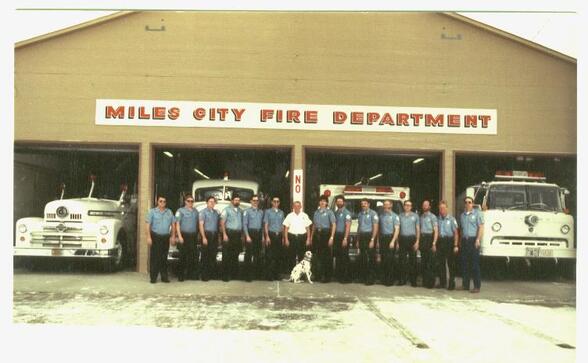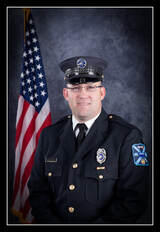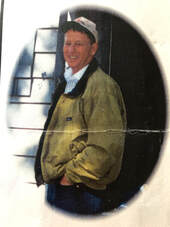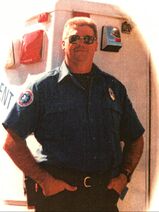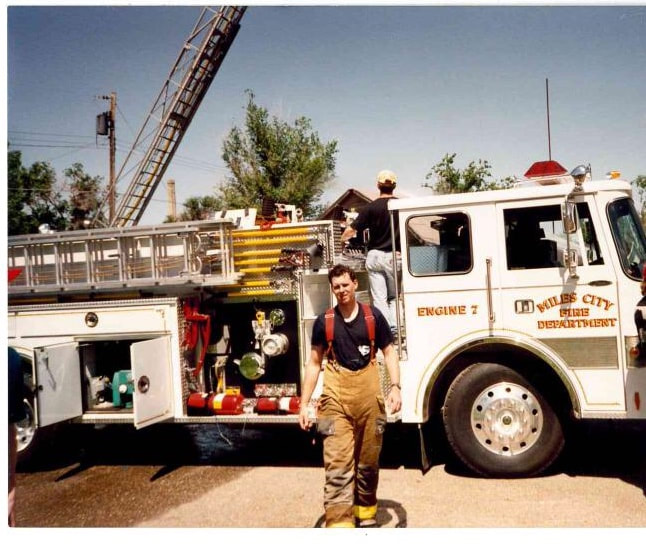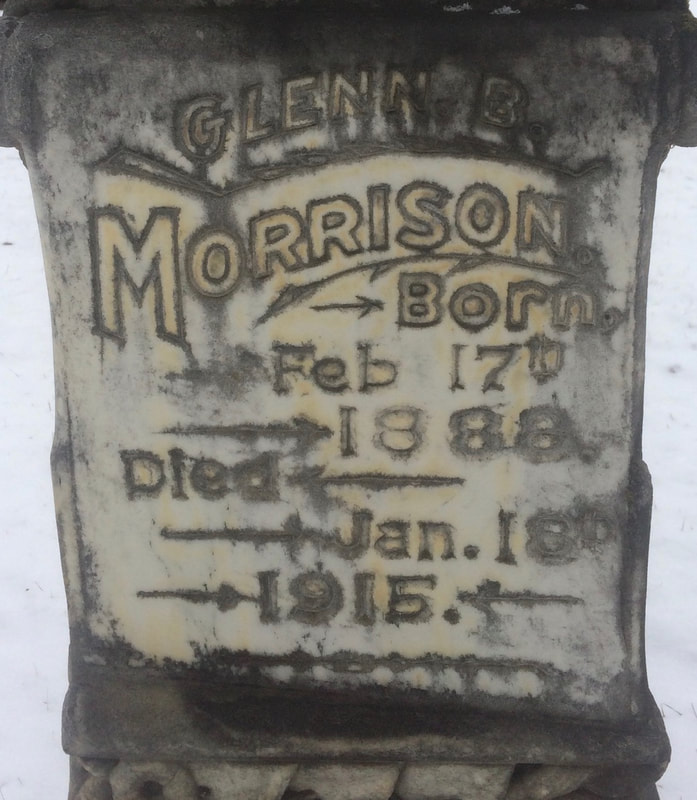HISTORY OF MCFR
The history of Miles City Fire & Rescue started from the days of the Wild West in a town with more saloons than any other type of business. In the early days, many of the buildings on Main Street were wooden structures with a few brick buildings scattered around. Fires would take out whole blocks until a more substantial brick building would stop the progress of the fire. The multiple fires slowly eroded away the first pioneer’s wooden structures. This could be deemed as early urban renewal - and was the birth of the necessity for a formal fire department.
In 1879 the Pioneer Hook and Ladder Company was organized and Miles City raised $3,500 for a new fire engine. J.W. Johnson was appointed the first town Fire Marshal on June 7th 1879. In 1889 the Miles City Fire Department was established. In the early days of the city another fire department was also in existence, The Dillion Fire Company.
The first ever Firefighters Ball or “Toy Dance” was held the Dillion Fire Company in 1889 on February 19th in the old Macqueen house famous hostelry. The Toy Dance has been held every year since and has been a long standing tradition in the community to raise money for those in need.
Some of the first major fires in Miles City are noted below and were obtained from information at the Miles City Public Library:
An inquisition held at Miles City, Montana, in the county, of Custer, on the 22nd day of July, A. D., 1883 before Dr. R. G. Redd, coroner of said county, upon the body of William Rigney, there lying dead, by the jurors whose names are hereunto subscribed, the said jurors upon their oaths, do say he came to his death by strangulation from a rope at the hands of parties unknown to them. Events happened (quickly during the night and day following the hanging of Rigney. On the same night an act of incendiarism happened that threatened to destroy the entire town and did damage to property amounting to $54,800. The losses and the persons on whom they fell are as follows : Cosmopolitan theater and saloon, Eating stand, S. Simons, gun store, Bassinski Bros., merchandise store: W. E. Savage. Chris Hehli, Dr. Dodge, C. P. Bishop, Sideboard saloon, Hineman & McTierman. It was supposed that some of Rigney’s pals had been loafing around the jail and saw^ him taken out, and fearing the outcome, had incited these acts of incendiarism. The story of Rigney's fate did not gain general circulation until the fire had burned itself out and a fevered and angry community, made up of two antagonistic elements, was on the verge of serious trouble. To the law and order people the connection seemed plain and was accepted as an act of retaliation, and a committee of public safety was at once organized which ordained the departure of all suspicious characters.
Another disastrous fire occurred October 26, 1883. When it was first discovered it was within the control of a few buckets of water, but water was not to be had, and the flames in a few minutes spread beyond control. In less time than it takes to tell it the rear of the Criterion building was in flames from the ground to the ridge pole, and the intense heat soon communicated fire to a pile of rubbish in the rear of adjoining buildings. By this time, although no alarm had been turned in, the little town was alive to the situation and willing hands were at work at the pumps and with buckets. It was apparent from the start that the Park street front was doomed. All along this front from Coleman's to Flick & Louis' place, energetic workers lent their aid to remove everything that was movable. From the rear of the Criterion building the fire quickly spread to Bishop & Hill's, Ritter & Co.'s and Bach's buildings, and thence along the line. The ruthless flames swept on and soon enveloped Sam O'Connell's fine building About this time a keg of powder was placed in Flick & Hineman's saloon, which, as subsequently proved, was the salvation of Schmalsle's corner and the buildings beyond. The First National bank building received its second baptism of fire and stood it nobly, although good work had to be, and was, done, to keep the fire from communicating through the wood work. It was done, however, and by 12:30 everyone breathed easier and felt that the danger to the bank and other buildings was past.
In May, 1885, Miles City was again the victim of a disastrous fire that entailed a loss of about $100,000. The fire broke out in the rear of the Merchants' hotel and spread rapidly until it seemed as if the business portion
of the town would be entirely swept away. But the benefit of brick walls came in and stopped the fire. All the buildings from Sherburne's to Leighton's stores on the north side of Main street, and from Bach's restaurant on the east side of Park street to the old United States Land Office and the west side of Park street to the Grand Central hotel, and on the south side of Main street to the First National bank were totally destroyed. Among the losers were the following King & Ward's saloon, Orschel's store. Miles & Strevell hardware, Cotton & Kennedy's saloon, the old Broadwater and Hubbells' building, the vacant Grand Central hotel, and a large number of other buildings. The fire swept away all of the north side of Main street, except Savage's store, and the Leighton brick block, that was left by the fire two years ago. It was a serious blow and the loss fell heavily upon Miles City.
On the evening of June 30, 1886, the quiet of the town was again disturbed by the cry of "fire." The fire was a short one, but in its durance it spoiled much property. The ill- fated buildings were those owned by W. A. Burleigh, Jr., Theodore Bruback and Mr. Anderson. The loss on Burleigh's property is estimated at from nine to ten thousand dollars, nearly covered by insurance; the building- was insured for $1,500, stock $4,100, and fixtures $1,000, total $6,600. T. Bruback's building was used as a restaurant and was insured for $1,500. The loss on Anderson's houses footed up about $800. One of them was occupied by Judge Staehle and he lost his furniture valued at $500. The total loss on all property was estimated at about $15,000. The origin of the fire was unknown.
Early in the morning, July 4, 1886, the large packing house recently built was burned to the ground with a loss of thirty thousand dollars. A policy entitling the company to fifteen thousand dollars insurance had expired only a few days previously. This was a serious blow to the town, as it would undoubtedly have become a great shipping point for dressed meats had it not been for this disaster.
The town was again visited by a dreadful holocaust August 7, 1886. About one o'clock a. m. an alarm of fire was given and a sheet of flame was seen issuing from the rear of the Graham block. The fire originated in the old three story building owned by the Graham estate, a building unoccupied and unconnected with either of the two buildings that backed up against it. How it caught has always been a mystery. But little was saved from this fire, it being almost useless to attempt to move the heavy fixtures and furnishings of the houses and stores.
February 12. 1887, the town suffered a $9,500 fire. The losses on buildings were:
Butler, $1,800; Gibbs, $1,500; Savage, $1,600. Losses on stocks and fixtures: Birkle, $1,200; Wright, $1,000; Smith, $2,000; Ward, $250; Young, $250. On February 26, a second fire on Main Street did a damage of ten thousand dollars.
Park Street was visited by a ten thousand dollar fire on July 1, 1889, but as has been the case in Miles City fires, it was nearly covered by insurance. The insurance amounted to $8,300.
After an intervention of three years without a disastrous blaze, the town was once more visited by the terrible destroyer. On September 30. 1892, the' alarm was given and the next morning only a few embers and the brick walls of the Conrad building were left to mark the spot where on the previous day had stood eight buildings. The origin of the fire is supposed to have been incendiary.
1895. November of that year the convent caught fire. 'The alarm being duly given, was responded to by the Miles City fire department, but owing to an unfortunate accident the city water was not available in sufficient quantities and the convent was burned to the ground.
And so went the early days of firefighting until all of the structures on Main Street were built of brick. In the fall of 1889, the City of Miles City adopted Ordinance Number 31, “to provide for the organization and government of the Miles City Fire Department”. The first fire department had three full-time members, the Chief Engineer, First Assistant Engineer, and a Secretary; the remaining members were volunteers.
Arrangements were made to purchase a hook and ladder vehicle and two hose carts, which was the first equipment used by the Miles City Fire Department.
A horse-drawn hose wagon was purchased on May 15th 1908, pulled by a horse named “Maud S”.
The first mechanical fire engine in Miles City was Engine #1 in 1916.
Engine # 2 was obtained in 1918
Engine # 3 was obtained in 1929
Engine # 4 was obtained in 1946
Engine # 5 was obtained in 1956
Engine # 6 was obtained in 1972
Engine # 7 was obtained in 1989
Engine # 8 was obtained in 2004
Engine # 9 was obtained in 2017
By 1912, the number of full-time personnel had grown to six.
On January 19th, 1939, with eight full-time members, Local 600 of the International Association of Fire Fighters (IAFF) was formed.
In 1958 the Miles City Fire Department took over the city ambulance service, and still operates it to this day.
In the 1970’s and 1980’s Miles City saw numerous major fires.
In 1991 Miles City Fire Department had 13 line firefighters as well as, a full time Chief, Mechanic, Fire Inspector, and Training Officer. There were a total of 17 full-time employees and 23 active part-paid for a total of 40 members; 1991 saw a total 792 calls for service.
In 2002 the Miles City Fire Department changed its name to Miles City Fire & Rescue to better identify the services provided.
In 2014 MCFR started providing Paramedic level service on a limited basis for Emergency Medical Service and ambulance transport.
Today Miles City Fire & Rescue (MCFR) has 15 full-time members and 10 part-paid members for a total of 25 employees. MCFR is an all hazard response department and responds to over 1,600 calls for service annually.
In 1879 the Pioneer Hook and Ladder Company was organized and Miles City raised $3,500 for a new fire engine. J.W. Johnson was appointed the first town Fire Marshal on June 7th 1879. In 1889 the Miles City Fire Department was established. In the early days of the city another fire department was also in existence, The Dillion Fire Company.
- There is little information regarding these three fire departments in the early days of Miles City. As more information is found it will be added.
The first ever Firefighters Ball or “Toy Dance” was held the Dillion Fire Company in 1889 on February 19th in the old Macqueen house famous hostelry. The Toy Dance has been held every year since and has been a long standing tradition in the community to raise money for those in need.
Some of the first major fires in Miles City are noted below and were obtained from information at the Miles City Public Library:
An inquisition held at Miles City, Montana, in the county, of Custer, on the 22nd day of July, A. D., 1883 before Dr. R. G. Redd, coroner of said county, upon the body of William Rigney, there lying dead, by the jurors whose names are hereunto subscribed, the said jurors upon their oaths, do say he came to his death by strangulation from a rope at the hands of parties unknown to them. Events happened (quickly during the night and day following the hanging of Rigney. On the same night an act of incendiarism happened that threatened to destroy the entire town and did damage to property amounting to $54,800. The losses and the persons on whom they fell are as follows : Cosmopolitan theater and saloon, Eating stand, S. Simons, gun store, Bassinski Bros., merchandise store: W. E. Savage. Chris Hehli, Dr. Dodge, C. P. Bishop, Sideboard saloon, Hineman & McTierman. It was supposed that some of Rigney’s pals had been loafing around the jail and saw^ him taken out, and fearing the outcome, had incited these acts of incendiarism. The story of Rigney's fate did not gain general circulation until the fire had burned itself out and a fevered and angry community, made up of two antagonistic elements, was on the verge of serious trouble. To the law and order people the connection seemed plain and was accepted as an act of retaliation, and a committee of public safety was at once organized which ordained the departure of all suspicious characters.
Another disastrous fire occurred October 26, 1883. When it was first discovered it was within the control of a few buckets of water, but water was not to be had, and the flames in a few minutes spread beyond control. In less time than it takes to tell it the rear of the Criterion building was in flames from the ground to the ridge pole, and the intense heat soon communicated fire to a pile of rubbish in the rear of adjoining buildings. By this time, although no alarm had been turned in, the little town was alive to the situation and willing hands were at work at the pumps and with buckets. It was apparent from the start that the Park street front was doomed. All along this front from Coleman's to Flick & Louis' place, energetic workers lent their aid to remove everything that was movable. From the rear of the Criterion building the fire quickly spread to Bishop & Hill's, Ritter & Co.'s and Bach's buildings, and thence along the line. The ruthless flames swept on and soon enveloped Sam O'Connell's fine building About this time a keg of powder was placed in Flick & Hineman's saloon, which, as subsequently proved, was the salvation of Schmalsle's corner and the buildings beyond. The First National bank building received its second baptism of fire and stood it nobly, although good work had to be, and was, done, to keep the fire from communicating through the wood work. It was done, however, and by 12:30 everyone breathed easier and felt that the danger to the bank and other buildings was past.
In May, 1885, Miles City was again the victim of a disastrous fire that entailed a loss of about $100,000. The fire broke out in the rear of the Merchants' hotel and spread rapidly until it seemed as if the business portion
of the town would be entirely swept away. But the benefit of brick walls came in and stopped the fire. All the buildings from Sherburne's to Leighton's stores on the north side of Main street, and from Bach's restaurant on the east side of Park street to the old United States Land Office and the west side of Park street to the Grand Central hotel, and on the south side of Main street to the First National bank were totally destroyed. Among the losers were the following King & Ward's saloon, Orschel's store. Miles & Strevell hardware, Cotton & Kennedy's saloon, the old Broadwater and Hubbells' building, the vacant Grand Central hotel, and a large number of other buildings. The fire swept away all of the north side of Main street, except Savage's store, and the Leighton brick block, that was left by the fire two years ago. It was a serious blow and the loss fell heavily upon Miles City.
On the evening of June 30, 1886, the quiet of the town was again disturbed by the cry of "fire." The fire was a short one, but in its durance it spoiled much property. The ill- fated buildings were those owned by W. A. Burleigh, Jr., Theodore Bruback and Mr. Anderson. The loss on Burleigh's property is estimated at from nine to ten thousand dollars, nearly covered by insurance; the building- was insured for $1,500, stock $4,100, and fixtures $1,000, total $6,600. T. Bruback's building was used as a restaurant and was insured for $1,500. The loss on Anderson's houses footed up about $800. One of them was occupied by Judge Staehle and he lost his furniture valued at $500. The total loss on all property was estimated at about $15,000. The origin of the fire was unknown.
Early in the morning, July 4, 1886, the large packing house recently built was burned to the ground with a loss of thirty thousand dollars. A policy entitling the company to fifteen thousand dollars insurance had expired only a few days previously. This was a serious blow to the town, as it would undoubtedly have become a great shipping point for dressed meats had it not been for this disaster.
The town was again visited by a dreadful holocaust August 7, 1886. About one o'clock a. m. an alarm of fire was given and a sheet of flame was seen issuing from the rear of the Graham block. The fire originated in the old three story building owned by the Graham estate, a building unoccupied and unconnected with either of the two buildings that backed up against it. How it caught has always been a mystery. But little was saved from this fire, it being almost useless to attempt to move the heavy fixtures and furnishings of the houses and stores.
February 12. 1887, the town suffered a $9,500 fire. The losses on buildings were:
Butler, $1,800; Gibbs, $1,500; Savage, $1,600. Losses on stocks and fixtures: Birkle, $1,200; Wright, $1,000; Smith, $2,000; Ward, $250; Young, $250. On February 26, a second fire on Main Street did a damage of ten thousand dollars.
Park Street was visited by a ten thousand dollar fire on July 1, 1889, but as has been the case in Miles City fires, it was nearly covered by insurance. The insurance amounted to $8,300.
After an intervention of three years without a disastrous blaze, the town was once more visited by the terrible destroyer. On September 30. 1892, the' alarm was given and the next morning only a few embers and the brick walls of the Conrad building were left to mark the spot where on the previous day had stood eight buildings. The origin of the fire is supposed to have been incendiary.
1895. November of that year the convent caught fire. 'The alarm being duly given, was responded to by the Miles City fire department, but owing to an unfortunate accident the city water was not available in sufficient quantities and the convent was burned to the ground.
And so went the early days of firefighting until all of the structures on Main Street were built of brick. In the fall of 1889, the City of Miles City adopted Ordinance Number 31, “to provide for the organization and government of the Miles City Fire Department”. The first fire department had three full-time members, the Chief Engineer, First Assistant Engineer, and a Secretary; the remaining members were volunteers.
Arrangements were made to purchase a hook and ladder vehicle and two hose carts, which was the first equipment used by the Miles City Fire Department.
A horse-drawn hose wagon was purchased on May 15th 1908, pulled by a horse named “Maud S”.
The first mechanical fire engine in Miles City was Engine #1 in 1916.
Engine # 2 was obtained in 1918
Engine # 3 was obtained in 1929
Engine # 4 was obtained in 1946
Engine # 5 was obtained in 1956
Engine # 6 was obtained in 1972
Engine # 7 was obtained in 1989
Engine # 8 was obtained in 2004
Engine # 9 was obtained in 2017
By 1912, the number of full-time personnel had grown to six.
On January 19th, 1939, with eight full-time members, Local 600 of the International Association of Fire Fighters (IAFF) was formed.
In 1958 the Miles City Fire Department took over the city ambulance service, and still operates it to this day.
In the 1970’s and 1980’s Miles City saw numerous major fires.
In 1991 Miles City Fire Department had 13 line firefighters as well as, a full time Chief, Mechanic, Fire Inspector, and Training Officer. There were a total of 17 full-time employees and 23 active part-paid for a total of 40 members; 1991 saw a total 792 calls for service.
In 2002 the Miles City Fire Department changed its name to Miles City Fire & Rescue to better identify the services provided.
In 2014 MCFR started providing Paramedic level service on a limited basis for Emergency Medical Service and ambulance transport.
Today Miles City Fire & Rescue (MCFR) has 15 full-time members and 10 part-paid members for a total of 25 employees. MCFR is an all hazard response department and responds to over 1,600 calls for service annually.
MCFR Chief's
Branden Stevens December 12th 2017 to current
Gary Warren April 2015 to November 2017
Dale Berg March 2011 to July 2014
Derrick Rodgers 2006 to December 2010
Brent Christopherson June 1999 to July 2005
Pat Hedges 1996 to 1999
Leonard Smith 1987 to 1996
Russ Martin 1981 to 1987
Bob Lynam March of 1977 to 1981
Sylvester Strom October 1973 To 1977
Don Grauman October 1969 to 1973
Don Addington 1961 to 1969 * died in office
Emril Bracht 1961 * unknown and missing record
Frank Casey 1944 * unknown record to 1961
George Aitchson 1912 to 1944
Steve Forseth 1909 to 1912
Joe Deckert 1905 to 1909
J.H. Keenan 1904 to 1905
W N McConnell 1898 to 1904
LH Hayden 1896 to 1898
CB Babcock 1895 to 1896
Lewis King 1889 to 1895 First City Fire Department Chief
Babe Smith Unknown time prior to 1900 * department photo
J.W. Johnson First Town Fire Marshal June 7th 1879
Gary Warren April 2015 to November 2017
Dale Berg March 2011 to July 2014
Derrick Rodgers 2006 to December 2010
Brent Christopherson June 1999 to July 2005
Pat Hedges 1996 to 1999
Leonard Smith 1987 to 1996
Russ Martin 1981 to 1987
Bob Lynam March of 1977 to 1981
Sylvester Strom October 1973 To 1977
Don Grauman October 1969 to 1973
Don Addington 1961 to 1969 * died in office
Emril Bracht 1961 * unknown and missing record
Frank Casey 1944 * unknown record to 1961
George Aitchson 1912 to 1944
Steve Forseth 1909 to 1912
Joe Deckert 1905 to 1909
J.H. Keenan 1904 to 1905
W N McConnell 1898 to 1904
LH Hayden 1896 to 1898
CB Babcock 1895 to 1896
Lewis King 1889 to 1895 First City Fire Department Chief
Babe Smith Unknown time prior to 1900 * department photo
J.W. Johnson First Town Fire Marshal June 7th 1879
MCFR FALLEN FIREFIGHTERS
|
Captain Tim McGlothlin
January 6, 1972-October 27, 2011 |
|
Part-Paid Firefighter Ray Lundby
February 12, 1940-September 26, 2002
|
|
Firefighter/EMT Dave Anderson
June 14, 1957- April 19, 2001 |
|
Firefighter/EMT Patrick Flaherty
June 22, 1962 - January 26, 1993 "Pat" was a Firefighter at "MCFD" from 1990 until his death in 1993 due to leukemia. Patrick came to work for "MCFD" in 1990 where he was working at the time of his death. His love for the fire service and community radiated through his works. He was an EMT and CPR instructor and when not on duty he operated a fire extinguisher company alongside his fellow firefighter. Pat was a fun-loving guy who went the extra mile and will always be remembered for his great nature. |
|
Click to find out more
|

